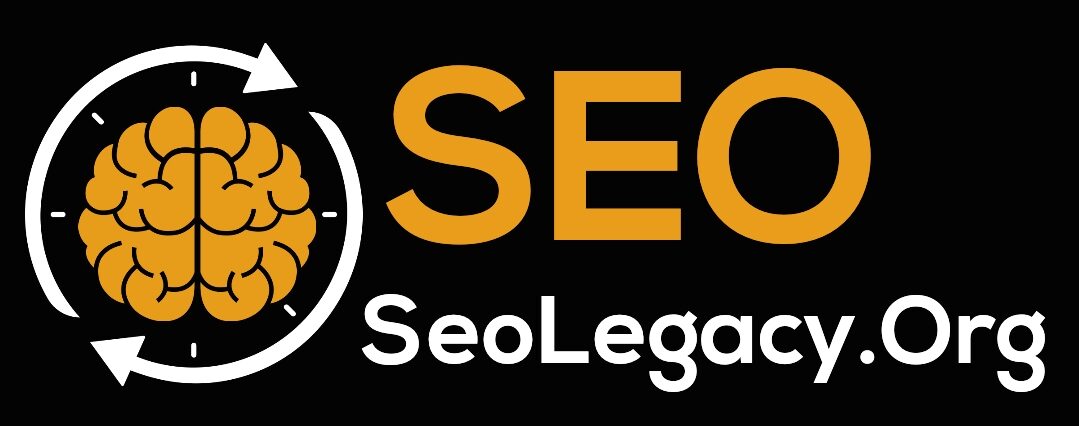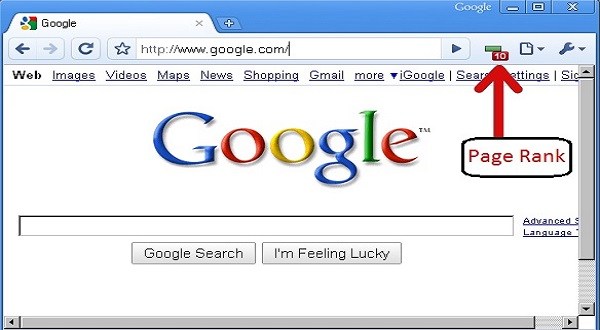When And How HTML Sitemaps Can Be Used For SEO And UX
Learn cases where utilizing visual, HTML sitemaps appear to be legit than basically depending on your site’s navigational construction or XML sitemaps.
John Mueller, a proponent of Google search, has always downplayed the significance of HTML sitemaps. He expressed his dissatisfaction with HTML sitemaps once more recently, stating:
“I altered my perspective on HTML sitemaps throughout the long term, they ought to never be required. A simple navigational structure should always be present on both large and small websites.
This is a somewhat more grounded position than what he’s communicated previously:
“With regards to Search engine optimization … for little destinations, your site ought to be crawlable in any case (and in the event that you’re utilizing a typical CMS, it’ll quite often be fine) and for enormous locales, they won’t be helpful at any rate (use sitemaps, utilize ordinary cross-connecting, check with a crawler of your decision).”
While Mueller makes a valid statement, as I would like to think, we can’t simply totally drop HTML sitemaps. Links and the usability of a website still matter.
In addition, I appreciate Pedro Dias’s response to Mueller’s remarks, a well-known SEO expert who used to work for Google:
Sadly, modifying the architecture of large and complex websites is difficult. Frequently, something like this, [sic!] can require multiple teams to change, which can take years. In this way, HTML sitemaps are much of the time a greeting and impermanent ish arrangement. I used to dislike them, but now I see their applications.
In SEO, “it depends,” as there is a compromise between HTML and XML sitemaps.
Why, when, and how to use sitemaps to benefit your website’s users are discussed below.
Why were sitemaps created in the first place?
In the beginning of the web, numerous sites developed naturally.
Information architects did not properly plan websites in accordance with UX best practices.
They started from scratch, and webmasters added content whenever it was needed, often in ways that weren’t very usable.
Before blogs, social media, or content management systems, those were the times. Using HTML, you built a website on your own.
The majority of the time, you were manually coding the HTML in a text editor with a messy WYSIWYG editor like Dreamweaver or one of the first, often custom-built CMS tools that were pretty cumbersome. In any case, the structures of the website quickly became confusing.
In order to make sense of the growing chaos, people started adding sitemaps to their websites out of necessity. Despite the fact that they displayed a map rather than written content, those sitemaps were created in plain HTML and had the appearance of any other webpage.
Later web crawlers presented supposed XML sitemaps intended to supplant manual “web index accommodation.”
HTML sitemaps are less popular today, more than 25 years later. However, just like we stopped using webrings or guest books, can we really stop using HTML sitemaps?
The visible versus the invisible aspects of HTML and XML sitemaps
To be brief and to the point, the primary distinction between XML sitemaps and HTML sitemaps is that HTML sitemaps are typically visible to website visitors, whereas XML sitemaps are not. The last option essentially made for web crawlers.)
At the end of 2007, search engines like Google, Yahoo, and Bing (then MSN) introduced the XML sitemaps standard.
They are formatted in a way that neither displays well nor is readable by humans by default. All things being equal, such sitemaps are utilized predominantly to guarantee legitimate and quicker ordering via web crawlers.
Then again, in light of the fact that an asset is on a XML sitemap doesn’t mean Google and Bing will file it, or it will be findable regardless of whether it’s in the record.
Rob Watts, a colleague in SEO, provided a humorous firsthand account to the discussion, stating:
For years, I saw successful websites devoid of html or xml sitemaps. I took off my tin foil hat and started using xml sitemaps. It was fun to see how long it took for URLs to appear in search engine results. Although it made some analyses and reports a little easier, I don’t think their use resulted in any discernible improvement in performance.
Since XML sitemaps only theoretically guarantee crawling and indexing, do we need to prioritize them over visible or visual sitemaps?
Why should we only produce sitemaps for Google?
Over the years, Google representatives have advised us to design websites for users rather than search engines. When it comes to sitemaps, why not make an exception and only make them for Google and other search engines?
It makes me wonder if there are any other SEO strategies that display the same thing to search bots and a different thing to website visitors.
Regardless, Google stated that, so we must listen, correct? Actually, no.
Google seems to prefer XML over HTML sitemaps for some reason.
XML sitemaps are generally mechanized and incorporate all the substance distributed when it’s on the web.
Sitemaps can be created by a number of WordPress tools for you. Yoast SEO also covers you, like the free version’s basic version.
In 2020, WordPress finally integrated support for XML sitemaps into its core, eliminating the need for additional plugins.
While HTML is messy, the XML code format is also machine-readable. XML breaks when you forget a character, while HTML must function despite errors.
Therefore, at the end of the day, the XML sitemap creation process operates largely behind the scenes without the intervention of erroneous human hands.
Additionally, your XML sitemap is not linked anywhere on the website, so most people won’t even know where to find it.
Making XML sitemaps work for individuals
Fortunately, there is always room for compromise. You don’t need to make XML sitemaps undetectable.
Stylesheets can be used to format XML sitemaps just like any other HTML page.
This method has been filling in the same length as XML has been near. You can get help with that from online tutorials.
Indeed, it appeared for a time that XML, or a compromise known as XHTML, would take over as the web standard.
For similarity reasons, that didn’t occur. despite the fact that the XHTML format was simpler and less prone to errors. The website did crash when there was a mistake.
Instead, HTML5 was introduced, and browsers adopted poorly coded websites in order to facilitate publishing but at the expense of automatic crawling.
You should now have an XML sitemap that can be read by people who don’t know how to code. Keep in mind that it is still a sterile list of all your content.
You could still think about making a HTML sitemap that visitors to your website can read.
When to utilize visual or HTML sitemaps
It’s not either/or. You could:
- Choose to isolate both noticeable and undetectable sitemaps as opposed to making your XML sitemap apparent to individuals.
- Make both noticeable (HTML) and undetectable (XML) sitemaps on your site for various reasons.
- Have multiple XML or HTML sitemaps.
It depends on your goals and the design of your website.
Make a decision based on the answers to these questions:
- Do you want to make a page that gives a quick overview of your website? Use a sitemap in HTML!
- Do you want to be indexed quickly and thoroughly? Create a sitemap in XML.
However, there are exceptions, and numerous websites do not adhere to standard practices.
Here are model use cases for visual or HTML sitemaps.
Heritage or potentially hard-coded locales
If you don’t believe me, there are still legacy websites from decades ago on the internet, as well as hand-coded websites written in HTML, CSS, or JavaScript.
In point of fact, you probably use one quite frequently.
Amazon.com is practically a similar site it was a long while back. It has been ceaselessly invigorated throughout the long term and improved right up ’til now.
For the bottom line, a complete redesign would have been too risky and disruptive.
An instantaneous XML sitemap may be difficult to create for some basic legacy websites. Therefore, when they have a HTML sitemap that has been hardcoded, it is not a problem.
Is it required to be removed by Google? Obviously not.
Large websites
When Mueller said that you needed proper site navigation, he was generally right. But it does not always apply to larger sites.
You can’t possibly fit a highly complex site with thousands of pages into a menu without it quickly spiraling out of control.
For better findability, it’s useful for both humans and search bots to have sitemaps that reflect the overall site structure.
You don’t have to list every page, as that would make it too large.
Option to uber menus
Mega menus are the result of numerous websites’ efforts to incorporate as much information as possible into their site navigation.
When you hover your mouse over the navigation, the menu covers the entire site at once.
With dozens of choices to choose from, users are quickly visually overwhelmed.
Also, if a user doesn’t point quickly enough to the right menu item, sometimes it will disappear when they lose the first menu.
Mega menus are tempting, especially in big businesses where everyone wants to be first.
However, as founder of Smashing Magazine Vitaly Friedman demonstrates clearly, they frequently present a nightmare for the user experience.
Sites with no built-in search
You might notice that many websites make it very difficult to get in touch with them when you do web outreach.
This is frequently the case with websites without an internal search function. It will be difficult to locate their contact page frequently.
It would make sense to implement a search feature, but it is surprising that some websites do not have one—even those built on WordPress, which already includes it.
A few topics or site proprietors essentially eliminate the hunt input.
A visual sitemap would be nice since I cannot locate a standard page in your menu and there is no search function.
Vagrant pages
Orphan pages frequently appear when you create a menu that is usable without growing to the point where it no longer fits on some screens.
Pages known as orphan pages lack internal links from the menu structure or content.
This occurs when links disappear and content is updated or removed.
Orphan pages frequently need to be completely removed.
Others actually seem OK yet probably won’t be as vital for place into the principal menu or the footer joins.
In order for people who are looking for these orphan pages to be found and accessed, they should be linked in a visible and readable sitemap.
Quicker indexing
Be sincere, please! Google will not index a page or other resource, such as an image or video, just because it is listed on an XML sitemap.
It’s possible that your website doesn’t have enough authority to include all of its content in the Google index.
In the past, new websites frequently encountered this problem. Particularly with recently made locales and Google having more restricted figuring power, some satisfied didn’t make it into the file intentionally.
It’s less of an issue now, however you actually might need to connect content inside to help your possibilities getting ordering.
Link to the content that is more important first, prominently, or more frequently.
Enhancing link equity
Link equity, which some SEOs still refer to as “link juice,” is what we mean when we talk about authority.
Link equity flow is somewhat regulated by an HTML sitemap that places some links first and others last.
Pages connected on top are supposed to have and get more authority than pages at the base.
To the best of my knowledge, there is no such hierarchy in XML sitemaps. Its entire collection of resources is nothing more than items in a list.
The item at the top is just the most recent one, not necessarily the most significant or requiring the most authority.
Unless you declare that some resources are more important and, as a result, ought to be crawled more frequently than others, there is no inherent hierarchy in XML sitemaps.
Like your site navigation, a visible HTML sitemap lets you link the most important resources first and send more users and authority their way. So it’s not “most recent” on top however generally significant on top, in a perfect world.
Usability
The most significant aspect of sitemaps—improving usability—comes last because we are discussing SEO here.
After all, this is Search Engine Land, not UX Collective. They advocate making an (interior) UX sitemap for each site project, essentially while laying out the data engineering.
HTML sitemaps enhance the user experience in general, particularly:
- Accessibility.
- Discoverability.
- Findability.
- Usability.
Just as they were in the 1990s, prior to the introduction of XML sitemaps and Google’s use of links for indexing and ranking, these are still the most compelling applications for HTML sitemaps.
Some older users, including myself, may even prefer page-style sitemaps to shaky menus that disappear when you touch them or search features that show irrelevant items.
There are some older people who are unable to use the mouse’s over and click actions effectively.
As few mouse clicks as possible are required by people with disabilities, particularly the visually impaired. In this manner, a one-page outline may be best for them.
Helpful sitemap models in nature
The New York Times
Because almost everyone is familiar with the publication and because it is such an authority, I frequently use the New York Times as an illustration.
This time, I’d like to use the New York Times as an illustration because they did something right and stood out.
The NYT makes use of visible HTML sitemaps in a way that is extremely beneficial to both readers and search engine bots.
The NYT has a few sitemaps featured by individual Website design enhancement Chris Long of Go Fish Computerized on LinkedIn. It is an excellent illustration of how sitemaps can benefit a website.
“60 Second Website design enhancement: One of the best HTML sitemaps I’ve seen is at the New York Times. An illustration of how an article from 1912 is just five steps away from [their] home page is as follows:”
I won’t go into too much detail here because Long has already done an excellent job.
Apple.com
Apple.com is a great example of how to use a sitemap on a large website. Both individuals and search engines can benefit from their straightforward text sitemap.
Nonetheless, note how much the sitemap varies from the real top route the Apple site has over the substance.
The links listed below begin the “Apple sitemap” with the unlinked “About Apple” section:
Evidently, the Web optimization group chose to make the shop and items more noticeable to site guests and search bots. At the same time, the pages appear to have a completely different structure or significance.
In any case, despite having more than a hundred links, the extensive Apple sitemap provides users with a comprehensive overview of the site’s contents.
In addition, as opposed to the standalone “sitemap” on the dedicated page, they have a second sitemap in the footer that reflects the structure of the top menu.
It is more modest both by the text dimension and by the quantity of connections recorded yet at the same time exceptionally valuable.
Therefore, a site navigation or sitemap will always be of assistance to you, regardless of where you end up.
An “everything is not difficult to track down” client experience is fundamental to the Apple web architecture.



